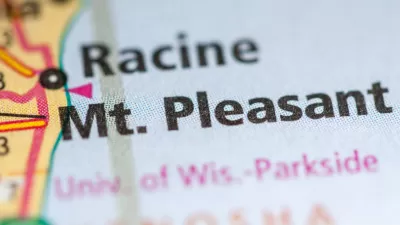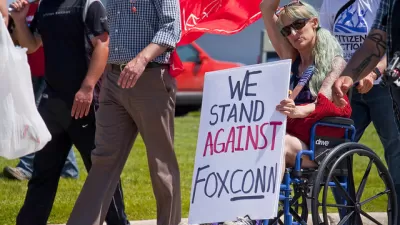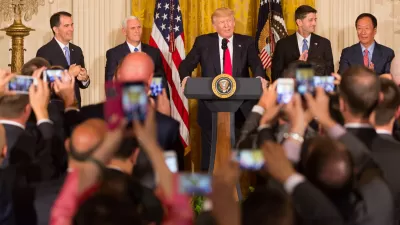Wisconsin taxpayer will be paying the bill for the deal to bring Foxconn to Racine "for decades, if not generations, to come."

Bruce Murphy devotes feature-length attention to the evolution of the deal that brought a massive Foxconn manufacturing plant to Racine County, in southeastern Wisconsin.
The original deal, written on the back of a napkin, offered Foxconn $3.1 billion, "far and away the largest in Wisconsin history and the largest government handout to a foreign company ever given in America," writes Murphy. Since the deal was announced in July 2017, that subsidy has ballooned to $4.1 billion.
But what seemed so simple on a napkin has turned out to be far more complicated and messy in real life. As the size of the subsidy has steadily increased to a jaw-dropping $4.1 billion, Foxconn has repeatedly changed what it plans to do, raising doubts about the number of jobs it will create. Instead of the promised Generation 10.5 plant, Foxconn now says it will build a much smaller Gen 6 plant, which would require one-third of the promised investment, although the company insists it will eventually hit the $10 billion investment target. And instead of a factory of workers building panels for 75-inch TVs, Foxconn executives now say the goal is to build “ecosystem” of buzzwords called “AI 8K+5G” with most of the manufacturing done by robots.
The article documents that growing size the subsidies offered in the deal, as well as the contraction of the new facility promised in return for the subsidies. That's only part of the story, however, as concerns grow about the environmental externalities of the future Foxconn plant. Wisconsin has exempted Foxconn from the state's environmental rules, "allowing it to discharge materials into wetlands and reroute streams during construction and operation" and also "[exempting] the company from doing an Environmental Impact Statement." Lee Bergquist reported in March that the plant "would rank among the highest in southeastern Wisconsin for pollutants that create smog, also known as ozone pollution."
All of the debate and concern over the size of the state's subsidy to Foxconn, and the reality of what it might get in return, is in context of the impending gubernatorial election, in which Gov. Scott Walker is seeking a third term in office.
FULL STORY: WISCONSIN’S $4.1 BILLION FOXCONN BOONDOGGLE

Alabama: Trump Terminates Settlements for Black Communities Harmed By Raw Sewage
Trump deemed the landmark civil rights agreement “illegal DEI and environmental justice policy.”

Study: Maui’s Plan to Convert Vacation Rentals to Long-Term Housing Could Cause Nearly $1 Billion Economic Loss
The plan would reduce visitor accommodation by 25% resulting in 1,900 jobs lost.

Planetizen Federal Action Tracker
A weekly monitor of how Trump’s orders and actions are impacting planners and planning in America.

Federal Homelessness Agency Places Entire Staff on Leave
The U.S. Interagency Council on Homelessness is the only federal agency dedicated to preventing and ending homelessness.

Restoring Northern India’s Himalayan ‘Water Temples’
Thousands of centuries-old buildings protect the region’s natural springs and serve as community wells and gathering places.

Milwaukee to Double Bike Share Stations
Bublr Bikes, one of the nation’s most successful, will add 500 new e-bikes to its system.
Urban Design for Planners 1: Software Tools
This six-course series explores essential urban design concepts using open source software and equips planners with the tools they need to participate fully in the urban design process.
Planning for Universal Design
Learn the tools for implementing Universal Design in planning regulations.
Caltrans
Smith Gee Studio
Institute for Housing and Urban Development Studies (IHS)
City of Grandview
Harvard GSD Executive Education
Toledo-Lucas County Plan Commissions
Salt Lake City
NYU Wagner Graduate School of Public Service




























